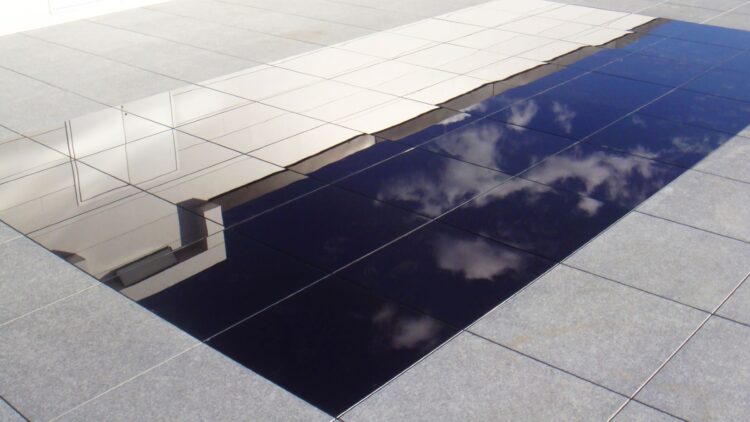Silicon-based solar cells have dominated the solar energy scene, as the material with which they are manufactured is considered the second most abundant on the planet, following oxygen. However, their efficiency pales to that of the photovoltaic ceramic developed by Swiss researchers in recent years.
Photovoltaic ceramic: A gigantic step into a greener future
Although silicon-based solar cells have been an exceptional clean energy alternative for decades, acquiring this energy source comes with many significant obstacles that make it difficult for most households to access. According to Architectural Digest, installation costs range between $17,430 and $23,870.
Various factors can affect the price, including your home’s energy needs, location, choice of panels, and even federal tax incentives. Therefore, industry experts continue to search for more effective, sustainable, and accessible ways for us to harness solar energy at its highest potential. And that’s exactly what engineers at ETH Zurich, a public research university in Switzerland, have done.
The researchers developed a photovoltaic ceramic that can convert sunlight into energy 1000 times more efficiently than traditional solar panels. Using 3D-printing technology, they created a material that could provide several forms of clean energy.
It doesn’t stop at power generation
The photovoltaic ceramic developed at ETH Zurich comprises a perovskite structure, which is a metal-organic framework with a two-dimensional network. As the material absorbs natural light and generates an electrical charge, it allows the splitting of water molecules into hydrogen and oxygen.
The hydrogen can then be stored as an energy carrier. Additionally, as the ceramic produces an electrical charge, it also stores chemical energy, which is an excellent alternative to fossil fuels. Regarding power generation, the material consists of two main components: aluminum oxide and perovskite nanoparticles or perovskites, which effectively absorb light.
However, while perovskites are generally lauded for their efficiency in light absorption, they are susceptible to heat, moisture, and mechanical stress. That’s where the aluminum oxide comes in, as the perovskites are embedded in this chemical compound, and therefore shielded from unwanted conditions.
When light hits the perovskites, the aluminum oxide acts as a pathway for the electrons generated by these nanoparticles to the surface of the ceramic, thereby producing an electrical current. The structure of this groundbreaking ceramic makes it viable for domestic consumption.
Synthetic fuels and state-of-the-art 3D printing to siphon more solar energy
While the ETH Zurich scientists have taken us a step further in the global energy transition with photovoltaic ceramic, they’ve been hard at work, developing more technology to harness natural resources and produce liquid fuels from sunlight and air. They demonstrated the process by exposing a solar reactor to concentrated sunlight from a parabolic mirror.
This invention could reach up to 1500 degrees Celcius (2732 degrees Fahrenheit). This triggered a thermochemical reaction that split water and carbon dioxide captured from the air. The resulting compound was syngas (or synthesis gas), which can then be used to manufacture liquid fuels, like kerosene for aviation.
These are the methods the scientists have developed to harness sunlight, but they also found a way to improve our management of this energy source. They’ve done this through a new type of 3D printing technology. Solar reactors are known to have porous structures inside of them that are responsible for absorbing sunlight.
The scientists at ETH Zurich developed a new way of creating porous ceramic structures that could better harness and retain solar radiation, allowing reactors temperatures of up to 1500 degrees Celcius (2732 degrees Fahrenheit), which can lead to fuel production doubling compared to solar panels.
The progress these researchers are making is insanely commendable and indicates a promising future for healthier and zero-impact energy consumption. In due time, with photovoltaic ceramic, we could even see the erection of energy-positive buildings.

